
Iyengar Yoga, named after and developed by B. K. S. Iyengar, and described in his bestselling 1966 book Light on Yoga, is a form of yoga as exercise that has an emphasis on detail, precision and alignment in the performance of yoga postures (asanas).

Bellur Krishnamachar Sundararaja Iyengar was an Indian teacher of yoga and author. He is the founder of the style of yoga as exercise, known as "Iyengar Yoga", and was considered one of the foremost yoga gurus in the world. He was the author of many books on yoga practice and philosophy including Light on Yoga, Light on Pranayama, Light on the Yoga Sutras of Patanjali, and Light on Life. Iyengar was one of the earliest students of Tirumalai Krishnamacharya, who is often referred to as "the father of modern yoga". He has been credited with popularizing yoga, first in India and then around the world.

Pashchimottanasana, Seated Forward Bend, or Intense Dorsal Stretch is a seated forward-bending asana in hatha yoga and modern yoga as exercise. Janusirsasana is a variant with one knee bent out to the side; Upavishthakonasana has the legs straight and wide apart.
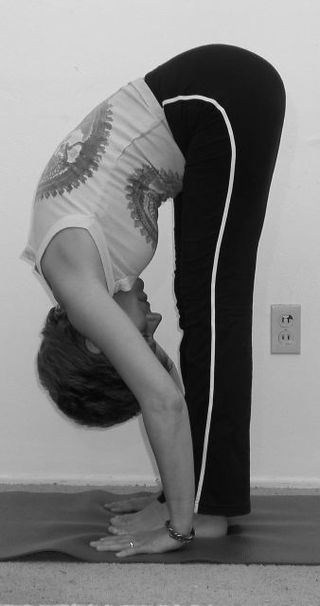
Uttanasana or Standing Forward Bend, with variants such as Padahastasana where the toes are grasped, is a standing forward bending asana in modern yoga as exercise.
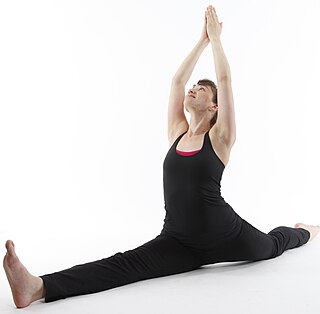
Hanumanasana or Monkey Pose is a seated asana in modern yoga as exercise. It is the yoga version of the front splits.
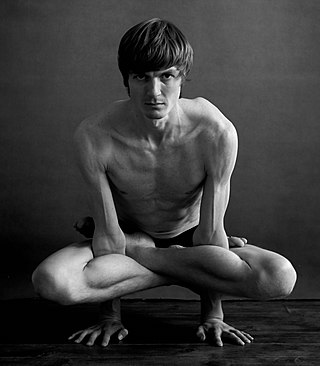
Kukkutasana, Cockerel Pose, or Rooster Posture is an arm-balancing asana in hatha yoga and modern yoga as exercise, derived from the seated Padmasana, lotus position. It is one of the oldest non-seated asanas. Similar hand-balancing poses known from the 20th century include Pendant Pose or Lolasana, and Scale Pose or Tulasana.

Chaturanga Dandasana or Four-Limbed Staff pose, also known as Low Plank, is an asana in modern yoga as exercise and in some forms of Surya Namaskar, in which a straight body parallel to the ground is supported by the toes and palms, with elbows at a right angle along the body. The variation Kumbhakasana, Phalakasana, or High Plank has the arms straight.

Garbha Pindasana, Embryo in Womb Pose, sometimes shortened to Garbhasana, is a seated balancing asana in hatha yoga and modern yoga as exercise.

Kurmasana, Tortoise Pose, or Turtle Pose is a sitting forward bending asana in hatha yoga and modern yoga as exercise.
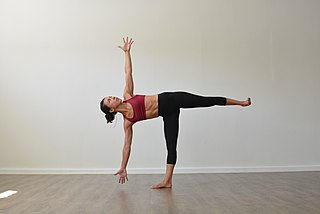
Ardha Chandrasana or Half Moon Pose is a standing asana in modern yoga as exercise.
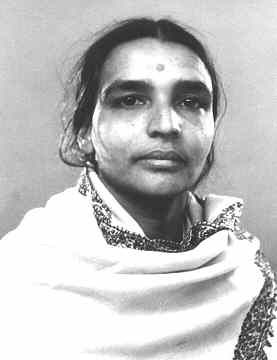
Geeta S. Iyengar, the eldest daughter of Yogacharya B. K. S. Iyengar, was a yoga teacher credited with advancing yoga for women.

The name Malasana is used for various squatting asanas in hatha yoga and modern yoga as exercise.

Bhekasana, or Frog posture is a reclining asana in modern yoga as exercise. It is one of several poses that put the body in a shape like that of a frog: another is Mandukasana.

Koundinyasana, or Sage Kaundinya's pose, is a hand-balancing asana in modern yoga as exercise. It may be performed with both legs bent, or with one leg over the supporting arm, the other leg straight . Eka Pada Galavasana has one leg bent, the foot hooked over the opposite arm under the body.
Joseph H. Pereira, popularly known as the Singing Priest, is an Indian Roman Catholic priest, social worker and the founder trustee of Kripa Foundation, a Mumbai-based non governmental organization working for the rehabilitation of HIV patients and people affected by substance abuse. He has been associated with Mother Teresa and B. K. S. Iyengar and is a member of the New York Academy of Sciences. A pupil of B. K. S. Iyengar and a proponent of Iyengar Yoga, he is a certified instructor of the yoga school. The Government of India awarded him the fourth highest civilian honour of the Padma Shri, in 2009, for his contributions to society.

Parshvottanasana or Intense Side Stretch Pose is a standing and forward bending asana in modern yoga as exercise.
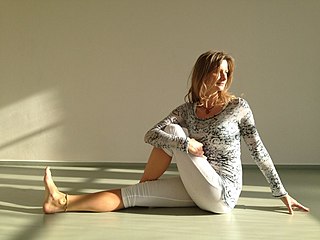
Marichyasana is a sitting twist asana in modern yoga as exercise, in some forms combined with a forward bend.

Jathara Parivartanasana, Revolved Abdomen pose, Belly twist, or Spinal twist is a reclining twist asana in modern yoga as exercise.
Angela Farmer is a teacher of modern yoga as exercise. She uses a non-lineage style that emphasizes the feminine, free-flowing aspect. She is known also as the creator of the first yoga mat.
















